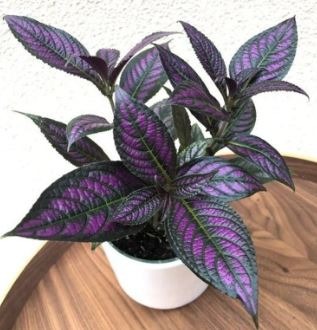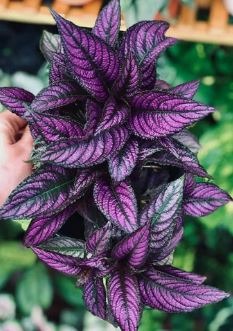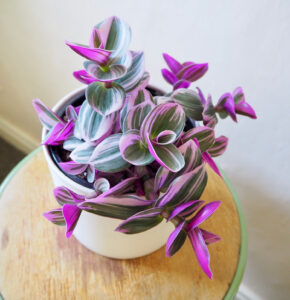Introduction

The Purple Persian Shield plant, also known as Strobilanthes dyerianus or Persian Shield, is a tropical plant that is native to Myanmar (Burma).
Here are some details about this plant:
Appearance:
- The Purple Persian Shield plant has large, colorful leaves that are typically 4-7 inches long and 2-3 inches wide.
- The leaves are a vibrant, metallic purple color with iridescent blue markings and veins.
- The plant can grow up to 3-4 feet tall and 2-3 feet wide, making it a great choice for adding height and interest to gardens or containers.
Growing Conditions:
- The Purple Persian Shield plant prefers full sun to partial shade and well-drained soil.
- It is a tropical plant that does best in warm, humid climates and is not frost-tolerant.
- It can be propagated from stem cuttings and typically grows quickly in the right conditions.
- Best suited for zones 9-11.
- In zone 9, the plant may die back in winter but will usually regrow in spring.
- In zones 10-11, the plant can be grown year-round as a perennial.
- In colder climates you can grow it as a houseplant, or as an annual in the summer.
Uses:
- The plant is often grown for its colorful foliage, which can add interest to gardens and containers.
- It can be used as a backdrop for other plants or as a statement plant on its own.
- The leaves of the plant are sometimes used in flower arrangements or as a natural dye for fabrics.
Note: While the Purple Persian Shield plant is not toxic to humans or pets, it is not typically consumed as food and may cause digestive upset if ingested in large quantities.
Indoors and Outdoor
Indoors
- Light: Requires bright, indirect sunlight to thrive. Place it near a window that receives filtered light or under grow lights if there’s not enough natural light.
- Temperature: The plant prefers warm temperatures between 65-75°F (18-24°C) and doesn’t tolerate cold drafts or sudden temperature changes.
- Water: Water the plant when the top inch of soil feels dry to the touch. Avoid overwatering, which can lead to root rot. It’s better to underwater than overwater the plant.
- Humidity: The Purple Persian Shield plant thrives in high humidity environments. You can increase humidity by placing a tray of water near the plant or using a humidifier.
- Fertilizer: Fertilize the plant once a month during the growing season with a balanced houseplant fertilizer.
- Pruning: Regular pruning can help the plant stay bushy and prevent it from becoming leggy. Pinch back new growth or cut back the stem by one-third if it’s getting too tall.
- Pests and Diseases: The Purple Persian Shield plant is relatively pest and disease resistant, but it may be prone to mealybugs, spider mites, and whiteflies. Check the plant regularly for signs of infestation and treat promptly with insecticidal soap or neem oil.
Overall, the Purple Persian Shield plant is relatively easy to care for as an indoor plant as long as it receives the right amount of light, humidity, and watering.
Outdoors
- Light: Requires full to partial sun to grow well. Place it in an area where it can receive at least 6 hours of direct sunlight each day.
- Soil: The plant prefers well-draining soil that is rich in organic matter. Amend the soil with compost or peat moss if necessary.
- Water: Water the plant deeply once a week, or more often in hot, dry weather. Avoid overwatering, which can lead to root rot.
- Fertilizer: Fertilize the plant every 2-3 weeks during the growing season with a balanced fertilizer. Avoid over-fertilizing, which can lead to excessive growth and weak stems.
- Pruning: Pinch back new growth regularly to encourage bushier growth and prevent the plant from becoming too tall and leggy.
- Mulching: Mulch around the base of the plant with a layer of organic matter to help retain moisture and suppress weeds.
- Pests and Diseases: The Purple Persian Shield plant is relatively pest and disease resistant, but it may be prone to spider mites, whiteflies, and mealybugs. Check the plant regularly for signs of infestation and treat promptly with insecticidal soap or neem oil.
Overall, the Purple Persian Shield plant is relatively easy to care for as an outdoor plant as long as it receives the right amount of light, water, and fertilization. With proper care, it can grow quickly and produce beautiful, vibrant foliage.
Questions or Concerns?
If you still are having trouble with your plant you can email us at GroundsofSerenity@gmail.com. Also, you can message in the shop you had bought it, we’ll be happy to help.


